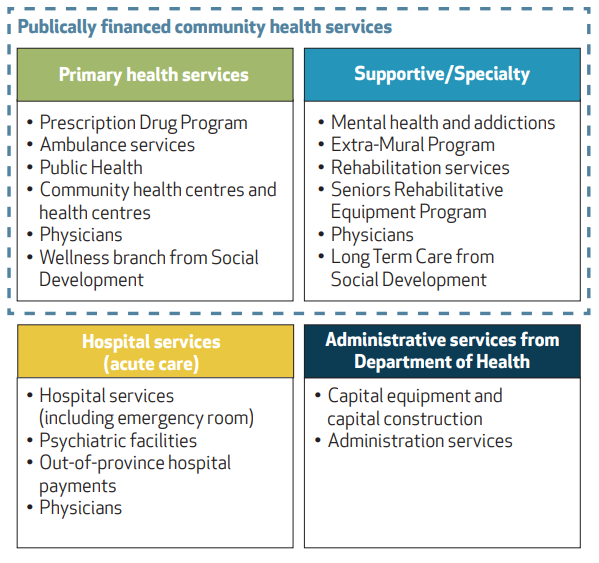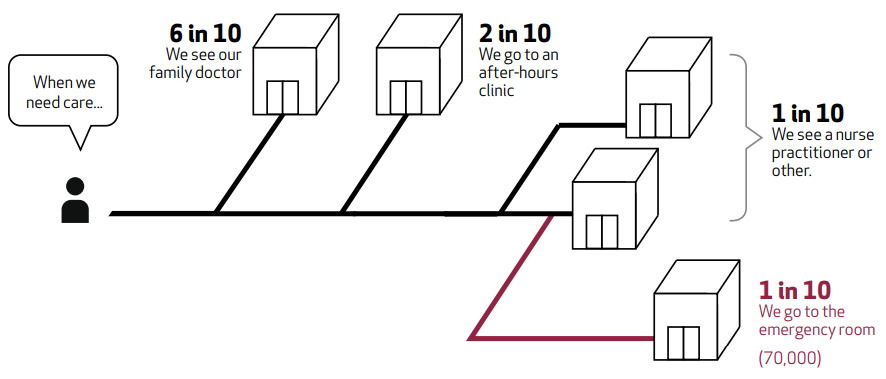What are primary health services?
Primary health services are broadly defined as the services provided at the first point of contact with the health system. Within a given year, over 90% of citizens receive some form of primary health service. Typically, we think of situations like visiting the doctor, getting a checkup from a nurse practitioner at a clinic, or being checked out in the emergency room following an accident. Most of the attention goes to the idea of primary care practitioners, the most typical of which are family doctors and nurse practitioners. Depending on the organization measuring primary care, other services may be included. Primary health services include routine care (such as screenings, check-ups and management of chronic health conditions), care for urgent but minor or common health problems, maternity and child care, health promotion and disease prevention, and nutrition counseling.
The model of primary care used by the New Brunswick Health Council includes:

As we move beyond the basic idea of primary health services, we begin to see organizations making different choices about how to classify care. For example, visiting a pharmacist to receive a flu shot, is this a primary health service, or is this more of a supportive/specialty service? When an ambulance comes and gets us at the scene of an accident, is this primary health service, or is this a pre-acute care service? Are the services of a physiotherapist supportive/specialty when they are prescribed by a family doctor, and do they become primary care services if the patient makes the initial visit directly to the therapist? What about mental health services?
As you can see there are multiple answers, and this is the reason why it is very important to know what is included in an organization’s model of primary health services, in order to understand their data and observations.
While there are a number of services that are included in the NBHC's Primary health model, the majority of our measuring, monitoring and evaluating is focused on family physicians and nurse practitioners. In our primary health services survey you will find a number of indicators that measure the care experience of the New Brunswick citizens with these two types of primary care professionals.
Regular places of care for New Brunswickers
6 in 10 New Brunswickers see their family doctor most often when they need care. Close to 1 in 10 (70,000 New Brunswickers) go directly to the emergency room.

Accessibility and appropriateness
There is much discussion about primary health services, both in New Brunswick and elsewhere. The reason for this is that research experience has shown that strong responsive primary health services can help to better support population health, as well as to reduce the overall cost of providing health services for a jurisdiction.Two key dimensions of quality that influence how much benefit can be received from primary health services are accessibility and appropriateness.
One way to know if a decision helps improve accessibility and appropriateness is to test it against the following five criteria: right patient, right provider, right care, right time, right venue. If every encounter in the health system (i.e. a visit to a primary care provider, a hospitalization, home care) met each of these five criteria, then optimal care and value will have been provided.
| Right patient | Right provider | Right care | Right time | Right venue |
| Are care choices matched to individual patient characteristics and preferences? | Does the scope of practice meet the needs to deliver care? | Is the care evidence-based? | Is the care delivered in a timely manner based on agreed upon performance targets? | Is the setting suited to provide safe and efficient delivery of care? |
Overall, strong primary health services provide great benefit to New Brunswickers, both as a current support for their health, and also for long-term benefit to the health care system, by reducing costs and improving quality.
